

Singapore, with an area of just 733 km², is facing the pressure of a rapidly aging population and severe land scarcity. Kampung Admiralty was built to solve three problems simultaneously: housing for the elderly, medical care, and community space – all on a plot of just 8,981 m² (0.9 hectares) in the Woodlands region of Northern Singapore.
What is special is that this project not only stacks functions on top of each other, but also creates a "vertical kampung" with a greening rate of 1.25 – i.e. 1.25 times the green area is 1.25 times the site area, exceeding the minimum requirement of 100% in Singapore [2].

Diagram of the cross-section of the 3-storey "club sandwich"
Designed by the renowned architectural firm WOHA, Kampung Admiralty adopts a cascading "club sandwich" model with three separate but mutually supportive functional "layers" [3].
Ground Level - Community Plaza:
Middle Floor (2nd-5th Floor - Medical Centre):
Upper Floor (Floors 6-11 - Community Park + Housing):
Specifications: [2]

Community Plaza on the ground floor - a vibrant community space
Instead of relying entirely on air conditioning like many modern buildings, Kampung Admiralty is designed as a "breathing creature" [6].
Cross-Ventilation with cross-shaped design:
Research shows: Exterior sunshade systems can reduce cooling energy by up to 13% [7]
Egg-crate façade:
2.2. Floor garden and 125% greening system
Kampung Admiralty achieved a Green Plot Ratio of 1.25 – which means that the total area of trees (including ground, green roof, green walls) is 1.25 times the area of the land [2][8]. Concrete:
Green trees are planted in cascading:
Benefits of the Green System:

Green floor garden with community tree planting system
Kampung Admiralty integrates the Active, Beautiful, Clean Waters (ABC Waters) system which includes[10][11]:

Basin and eco-pond bioretention systems
Solar Panels:
Pneumatic Waste Conveyance System (PWCS):
Building Management System:

Solar panels on the roof of the building
Singapore vs Ho Chi Minh City climate comparison:[12][13]
|
Index |
Singapore |
Ho Chi Minh City |
|
Average annual temperature |
28.77°C |
29.43°C |
|
Köppen Classification |
Af (Tropical Rainfall) |
Aw (Humid-Dry Tropical) |
|
Medium humidity |
80-85% |
78% |
|
Annual rainfall |
~2,340mm |
~1,909mm |
Conclusion: Ho Chi Minh City's climate is very similar to Singapore – both are hot and humid all year round, suitable for tropical green architectural solutions such as Kampung Admiralty [13].
LOTUS (Leadership in Operation Towards Urban Sustainability) is a green building certification system developed by the Vietnam Green Building Council (VGBC) since 2010, tailored to Vietnam's climate, construction codes and practices [14][15].
Four levels of LOTUS certification:[14][16]
The LOTUS evaluation criteria include 7 categories:[14]
Status in Vietnam:[17][18]
Cost of Certification: [20]
Natural ventilation and sunshade
Examples of applications in Vietnam:
Urban Greening with High Green Plot Ratio
Objectives for Vietnam:
Practical solution:
Examples of projects in Vietnam: [18]
Smart Water Management
Solutions for Vietnam:
Savings potential:
Renewable Energy
Solar Panels:
Example:
Implementation roadmap for Vietnam
Phase 1 (Immediate – 2 years):
Phase 2 (2-5 years):
Phase 3 (5-10 years):

Roadmap for green building implementation in Vietnam]
Economic benefits: Green means saving
Long-term operating savings
Specific example: A 10-storey apartment building (5,000 m²) in Ho Chi Minh City:
Increase the value of real estate
International Studies:
Brand image and social responsibility
Companies that invest in green buildings usually:
Conclusion: From "should" to "when to start"
Kampung Admiralty is not only a beautiful architectural project, but also a living testament to how tropical green architecture can be both sustainable, economical, and community-friendly.
Bottom Line:

Kampung Admiralty at night - a symbol of tropical green architecture
[1] Designboom. (2018). WOHA's kampung admiralty wins building of the year at world architecture festival 2018. Accessed from: https://www.designboom.com/architecture/woha-kampung-admiralty-singapore-10-30-2018/
[2] Designboom. (2018). Kampung Admiralty - Specifications. Accessed from: https://www.designboom.com/architecture/woha-kampung-admiralty-singapore-10-30-2018/
[3] WOHA. (2024). Kampung Admiralty. Accessed from: https://woha.net/project/kampung-admiralty/
[4] Architect Magazine. (2025). Kampung Admiralty. Accessed from: https://www.architectmagazine.com/project-gallery/kampung-admiralty/
[5] Wallpaper. (2022). Why Singapore's Kampung Admiralty by WOHA leads the way in designing communities. Access from: https://www.wallpaper.com/architecture/designing-communities-woha
[6] ArchitectureAU. Creating stronger communities: Kampung Admiralty. Access from: https://architectureau.com/articles/kampung-admiralty/
[7] ResearchGate. (2023). Thermal Performance Analysis of Existing External Solar Shading at Kampung Admiralty, Singapore. Access from: https://www.researchgate.net/publication/377094110_Thermal_Performance_Analysis_of_Existing_External_Solar_Shading_at_Kampung_Admiralty_Singapore
[8] UNEP Neighbourhood Guidelines. A three-dimensional green, mixed-use bioclimatic block in Kampung Admirality, Singapore. Access from: https://www.neighbourhoodguidelines.org/bioclimatic-block-kampung-admirality-singapore
[9] Dezeen. (2018). WOHA creates green community for senior citizens with Kampung Admiralty in Singapore. Access from: https://www.dezeen.com/2018/12/07/kampung-admiralty-woha-singapore-world-building-year/
[10] CSC Singapore. Kampung Admiralty: Building for All Ages. Access from: https://www.csc.gov.sg/articles/kampung-admiralty-building-for-all-ages
[11] State of Green. (2022). Kampung Admiralty: Green infrastructure bringing people together. Accessed from: https://stateofgreen.com/en/solutions/kampung-admiralty/
[12] Climate-Data.org. Ho Chi Minh City climate. Accessed from: https://en.climate-data.org/asia/vietnam/ho-chi-minh-city/ho-chi-minh-city-4235/
[13] Weather and Climate. Compare Ho Chi Minh & Central Singapore Weather and Climate. Accessed from: https://weatherandclimate.com/compare-ho-chi-minh-and-central-singapore
[14] VGBC. (2024). LOTUS Rating Systems. Access from: https://www.vgbc.vn/en/rating-systems/
[15] VGBC. (2025). Vietnam Green Building Council. Accessed from: https://www.vgbc.vn/en/
[16] BIC JSC. LOTUS green building standards. Access from: https://bicjsc.com/lotus-green-building-standards
[17] Constructive Voices. (2024). Vietnam Top Green Buildings. Access from: https://constructive-voices.com/vietnam-top-green-buildings/
[18] Vilandco. (2024). 11 Projects Achieve LOTUS Green Building Certification in 2023. Access from: https://vilandco.vn/en/11-du-an-dat-chung-nhan-cong-trinh-xanh-lotus-trong-nam-2023/
[19] VGBC. (2024). Develop LOTUS as a green building rating system. Access from: https://www.vgbc.vn/en/green-building-policies/
[20] VGBC. (2024). Green Building in Vietnam. Access from: https://www.vgbc.vn/en/green-building/
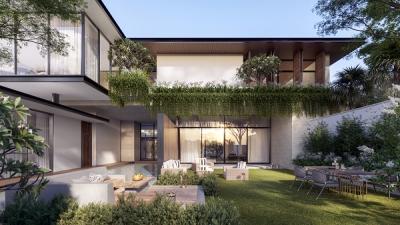
The News 10/11/2025
In the midst of the hustle and bustle of urban life, many Vietnamese families are looking for a different living space – where they can enjoy modernity without being far from nature. Tropical Modern villa architecture is the perfect answer to this need. Not only an aesthetic trend, this is also a smart design philosophy, harmoniously combining technology, local materials and Vietnam's typical tropical climate.
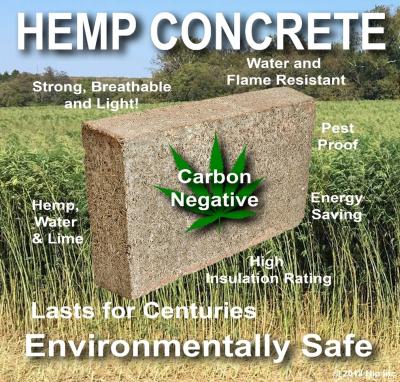
The News 25/10/2025
Hemp-lime (hempcrete) is a non-load-bearing covering material consisting of a hemp wood core (hemp shiv/hurd) combined with a lime-based adhesive, outstanding for its insulation – moisture conditioning – indoor environmental durability; in particular, IRC 2024 – Appendix BL has established a normative line applicable to low-rise housing, strengthening the technical-legal feasibility of this biomaterial.
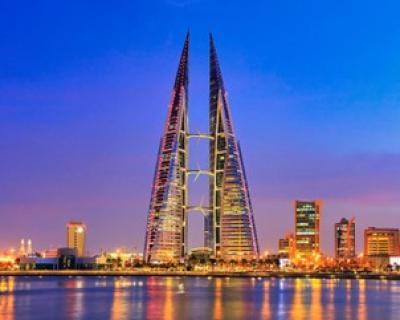
The News 11/10/2025
Amid rapid urbanization and global climate change, architecture is not only construction but also the art of harmonizing people, the environment, and technology. The Bahrain World Trade Center (BWTC)—the iconic twin towers in Manama, Bahrain—is a vivid testament to this fusion. Completed in 2008, BWTC is not only the tallest building in Bahrain (240 meters) but also the first building in the world to integrate wind turbines into its primary structure, supplying renewable energy to itself [1]. This article explores the BWTC’s structural system and design principles, examining how it overcomes the challenges of a desert environment to become a convincing sustainable model for future cities. Through an academic lens, we will see that BWTC is not merely a building but a declaration of architectural creativity.
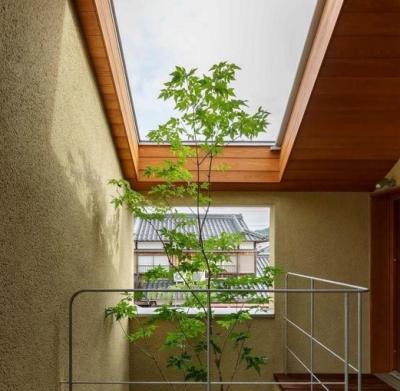
The News 04/10/2025
As buildings move toward net zero architecture and glare free daylighting, traditional glass façades reveal limitations: high thermal conductivity (~0.9–1.0 W/m·K), susceptibility to glare, and shattering on impact. In this context, transparent wood (TW) is emerging as a multifunctional bio based material: it offers high light transmission yet strong diffusion (high haze) to prevent glare, lower thermal conductivity than glass, and tough, non shattering failure. Recent reviews in Energy & Buildings (2025) and Cellulose (2023) regard TW as a candidate for next generation windows and skylights in energy efficient buildings. [1]
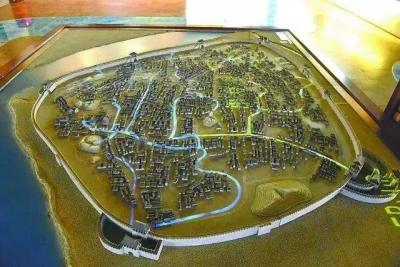
The News 27/09/2025
Urban flooding is one of the greatest challenges of the modern era, when sudden and unpredictable rainstorms can paralyze entire cities. Few would imagine that over a thousand years ago, people had already discovered a sustainable solution: the Fushougou drainage system in the ancient city of Ganzhou, Jiangxi. Built during the Northern Song dynasty, this project remains effective to this day, protecting the city from floods—even during historic deluges. The story of Fushougou is not only a testament to ancient engineering but also a valuable reference for today’s cities seeking answers to water and flooding problems.
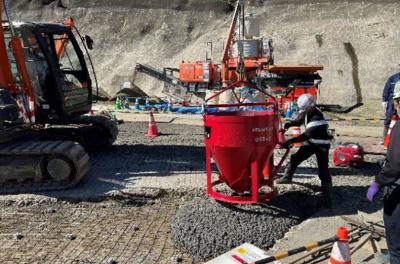
The News 20/09/2025
The construction industry is currently facing immense pressure to reduce carbon emissions, as concrete is not only one of the most widely used materials but also a major source of CO₂ due to its reliance on Portland cement. In response, Shimizu Corporation has conducted extensive research to develop sustainable material solutions aimed at achieving carbon neutrality. One of the most remarkable outcomes is carbon-negative concrete, which partially replaces cement and aggregates with biochar. This biochar is produced from sawdust through a carbonization process and has the unique ability to retain a significant amount of carbon that would otherwise be released into the atmosphere through natural decomposition or combustion. Thanks to this property, carbon-negative concrete not only maintains the necessary mechanical strength for construction but also directly contributes to reducing greenhouse gas emissions. This innovation is considered a promising step that opens new directions for the advancement of green construction in Japan and worldwide.